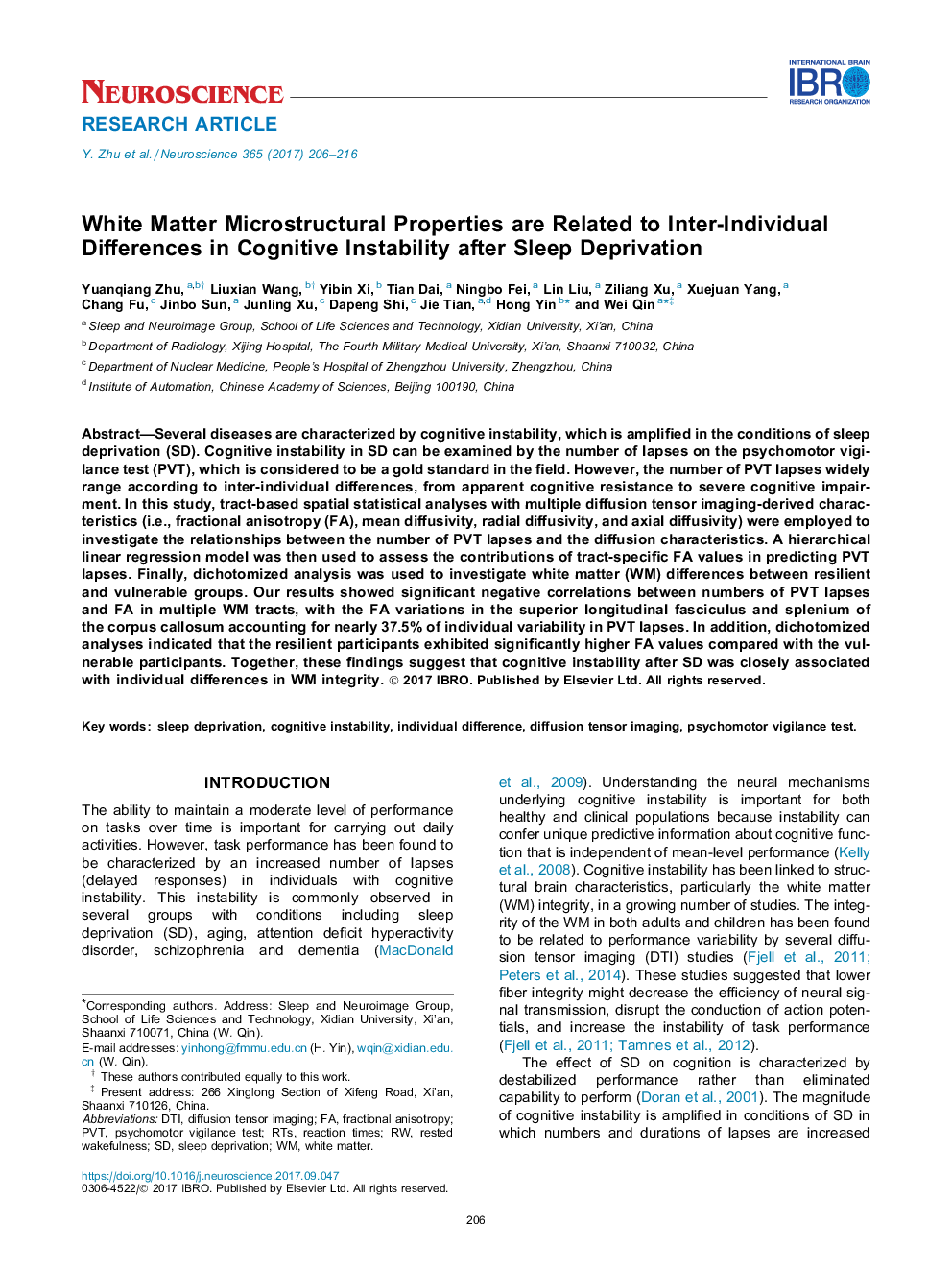| Article ID | Journal | Published Year | Pages | File Type |
|---|---|---|---|---|
| 8841288 | Neuroscience | 2017 | 11 Pages |
Abstract
Several diseases are characterized by cognitive instability, which is amplified in the conditions of sleep deprivation (SD). Cognitive instability in SD can be examined by the number of lapses on the psychomotor vigilance test (PVT), which is considered to be a gold standard in the field. However, the number of PVT lapses widely range according to inter-individual differences, from apparent cognitive resistance to severe cognitive impairment. In this study, tract-based spatial statistical analyses with multiple diffusion tensor imaging-derived characteristics (i.e., fractional anisotropy (FA), mean diffusivity, radial diffusivity, and axial diffusivity) were employed to investigate the relationships between the number of PVT lapses and the diffusion characteristics. A hierarchical linear regression model was then used to assess the contributions of tract-specific FA values in predicting PVT lapses. Finally, dichotomized analysis was used to investigate white matter (WM) differences between resilient and vulnerable groups. Our results showed significant negative correlations between numbers of PVT lapses and FA in multiple WM tracts, with the FA variations in the superior longitudinal fasciculus and splenium of the corpus callosum accounting for nearly 37.5% of individual variability in PVT lapses. In addition, dichotomized analyses indicated that the resilient participants exhibited significantly higher FA values compared with the vulnerable participants. Together, these findings suggest that cognitive instability after SD was closely associated with individual differences in WM integrity.
Keywords
Related Topics
Life Sciences
Neuroscience
Neuroscience (General)
Authors
Yuanqiang Zhu, Liuxian Wang, Yibin Xi, Tian Dai, Ningbo Fei, Lin Liu, Ziliang Xu, Xuejuan Yang, Chang Fu, Jinbo Sun, Junling Xu, Dapeng Shi, Jie Tian, Hong Yin, Wei Qin,
